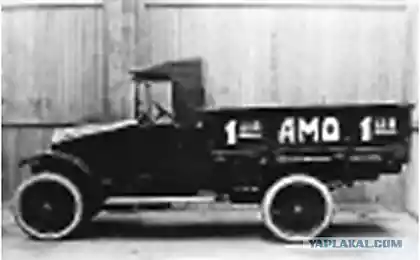219
What you need to know about car tire labeling
If you have a car, read this article! Not for the sake of idle interest: information about tyre marking will help to save a good amount and make the right choice among a diverse range of such important automotive equipment.
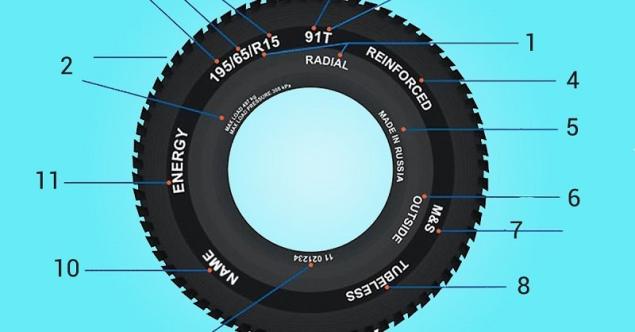
Tyre marking of cars
Transcription of car tire markings can be useful for your car lovers! I definitely sent them this useful article.

Tyre marking of cars
- Tyre size
The most important parameter! The first digit in the index is the width of the tire in millimeters, the second is the profile height as a percentage of the width. This is followed by a letter indicating the design of the tire, and a number indicating the landing diameter of the tire in inches. For example, the designation 195/65 R15 stands as follows: tire width 195 mm, profile height - 126.75 mm (65% of width), R - tire radial design (there are still diagonal, but they are not found today), landing diameter for installation on the disk - 15 inches.
Sometimes this index does not indicate the height of the profile (for example, 195 R15). This means that its value exceeds 80%. These tires are called full-profile. They are often equipped with vans and miniature trucks. - Index or load factor
Denoted by numbers from 0 to 130, but the most common range is from 71 to 110. And each combination corresponds to its permissible load on the tire in kilograms. Occasionally, manufacturers indicate the tire’s carrying capacity directly on the tire (in particular, this is mandatory for tires approved for sale in the United States). In this case, on the sidewall you can see the inscription Ma Load and the value of the load in kilograms and English pounds. For example, Ma Load 515 kg (1135 lbs).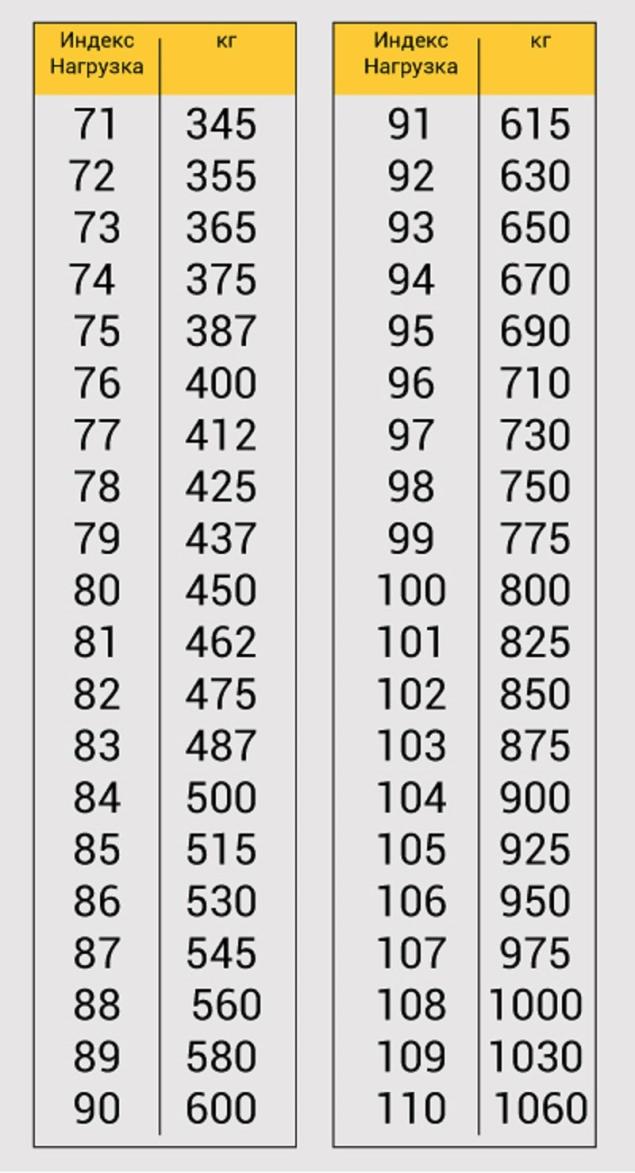
- Speed index
It is indicated in Latin letters and indicates the movement with what maximum speed the tire is designed.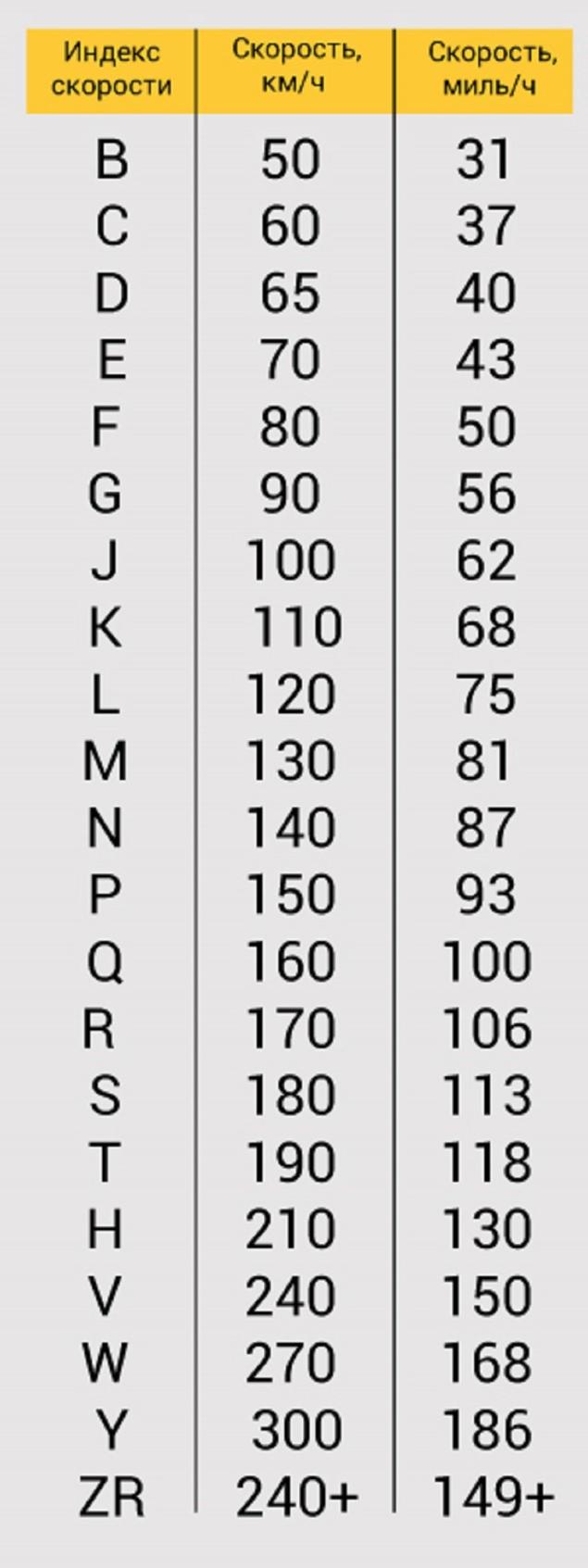
- Rainforced
Such an inscription indicates a reinforced tire frame, which is relevant for tires intended for commercial equipment. Therefore, often instead of the word Reinforced on the sidewall, the manufacturer simply adds the letter C (which means commercial) to the designation of the tire parameters. For example, 195/65 R15 C. - Tyre-producing country
Made in France, made in France, made in Germany. - Outside of the tyre
In tyres with an asymmetrical tread pattern, the external designation relative to the sidewall is applied to the sidewall. Outwards, Out, Side facing outwards, etc. - Optimal conditions for tyre operation
M + S - Mud + Snow: mud plus snow.
As - All SeasonAll-season.
Aw - Any Weather: any weather.
Aquatred, Aquacontact Or the icon in the form of an umbrella - special rain tires.
A snowflake pictogram Tires for harsh winter conditions. If there are no such designations on the sidewall, then the tire can be used exclusively in summer, in warm weather.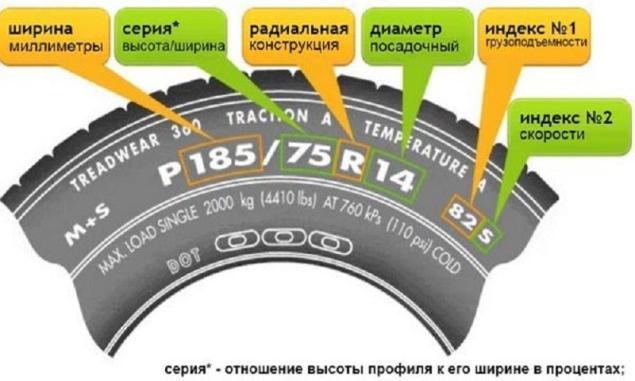
- Tyre performance
It can be chamber or chamberless. Tube Type (TT) or Tubeless (TL), respectively. - Certification mark
On tyres approved for use in Europe under UNECE Regulation No. 30, it represents the letter E in a circle and the numerical index corresponding to the country that issued the permit. For example, Russia in this list is fixed No. 22. This is followed by a long set of digits – the number of the certificate of conformity to the standards. Tires that meet American standards additionally carry the designation DOT, which encrypts not only the number of the test report, but also the tire manufacturer. For example, DOT MKR4 AJOR. - Name or logo of the tyre manufacturer
Michelin, Good Year, Yokohama. - Tyre model
Energy, SP Sport 9000, Turanza ER300. - Additional symbols
Tyre release date. This is a four-digit figure like 1109, which means: Week 11 of 2009 production. Regrooveable - a tire with the possibility of additional tread deepening.
TWI (Tread Wear Indication) - such a sign on the sidewall of the tire indicates the placement of the wear indicator on the tread (recall that in Russia its depth should be at least 1.6 mm). Usually this symbol is applied in a circle in six places.
It can be executed in different ways. For many manufacturers, the indicator is a simple protrusion in the tread groove. When they become equal in height, the tire should be recycled.
In more advanced models, the indicator looks like a set of numbers indicating the residual height of the tread. As it wears out, the numbers gradually wear off.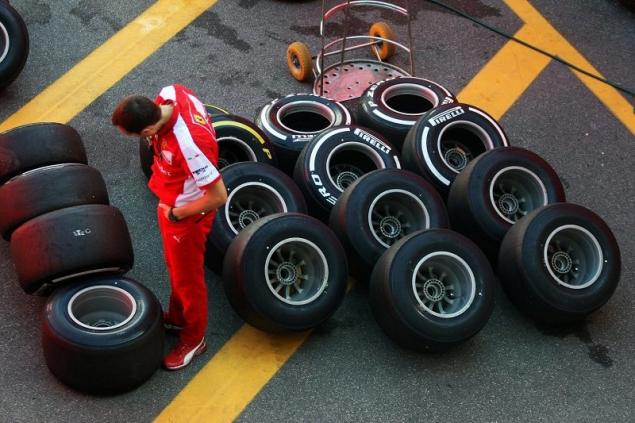
Maimum Pressure Maximum pressure in a cold tire. It is usually indicated in pounds per square inch (1PSI = 0.0069 MPa) or units of bar, practically equal to the atmosphere.
Arrow, sometimes with the inscription Rotation, shows the desired direction of rotation of the tire with a directional tread pattern.
Tread Wear Indedede - durability index. A conditional value that shows how long the tire is. For example, a tire with the designation 200 should theoretically have twice as much resource as an analogue with the index 100. But in practice, this is only possible in ideal conditions of the test site or laboratory, where there is no influence of factors such as driving style, road quality, etc.
Traction Indedede - index of coupling properties of the tire (A - excellent, B - medium, C - satisfactory). It is determined in the process of testing at a special test site according to a special method. It mainly assesses the quality of braking, not the stability in cornering.
Temperature Independence Temperature index (A - excellent, B - average, C - satisfactory). This indicator determines the resistance of the tire to high temperatures. The higher the rating, the less the tire changes its properties when heated. Tests are carried out in the laboratory on a special stand.
Colored dots (white, red, yellow) on the sidewall indicate the lightest place of the tire relative to the center of its rotation. According to the source, this is where the valve should be installed. If there are both yellow (white) and red marks on the tire, then the latter is located in the heaviest place of the tire.
Also on the tire sometimes there are designations indicating its special properties. In particular, tires RunFlat RunFlat System Component (RSC) allows you to travel with a punctured wheel for a while. In addition, there are models that provide protection of the disk rim. As a rule, such tires are used by manufacturers of premium cars.
Transcription of car tire markings can be useful for your car lovers! I definitely sent them this useful article.
How to cook Orsini eggs
A doctor with a good reputation: “Meat is to be!” Low-fat beef and poultry dishes help to cope.


















